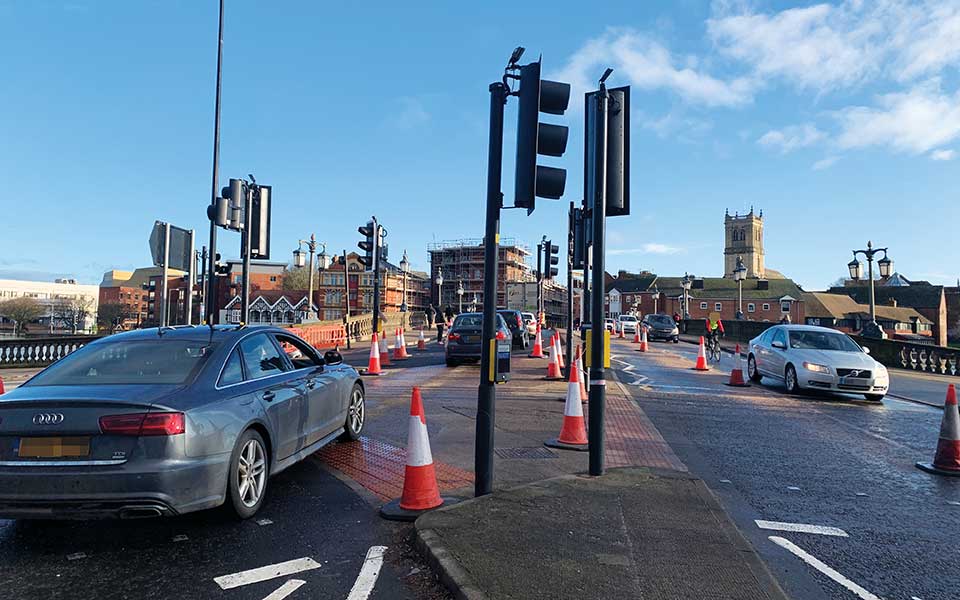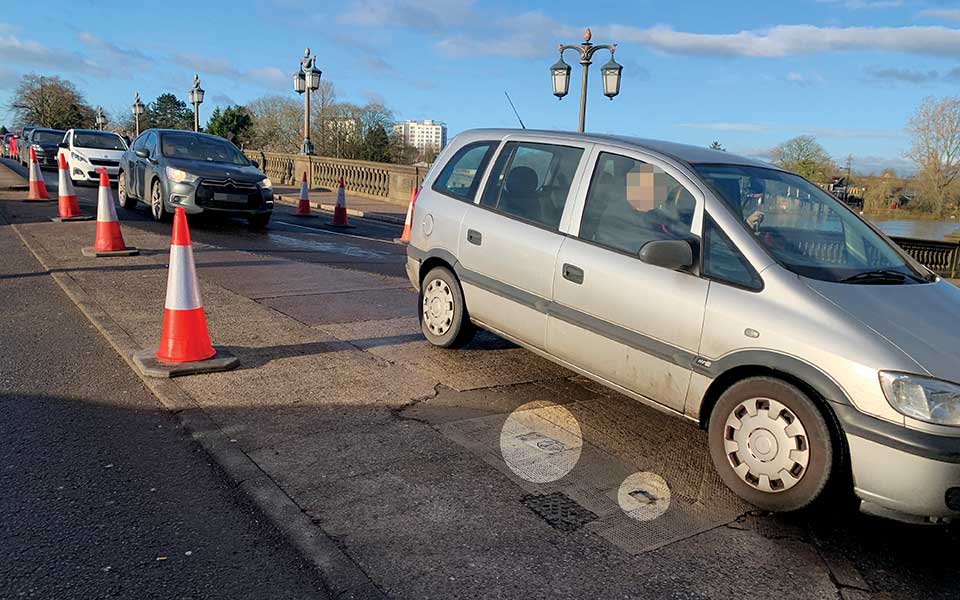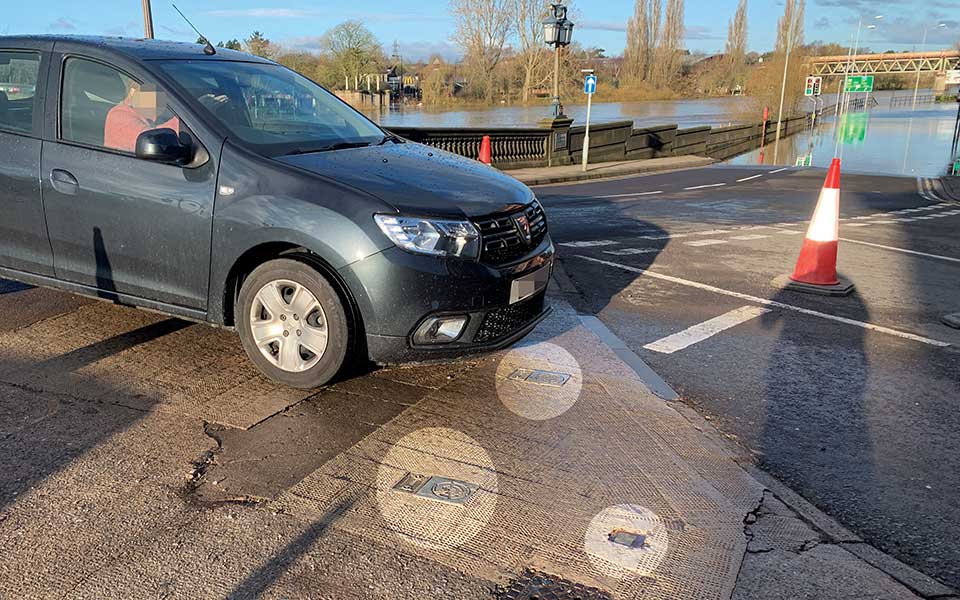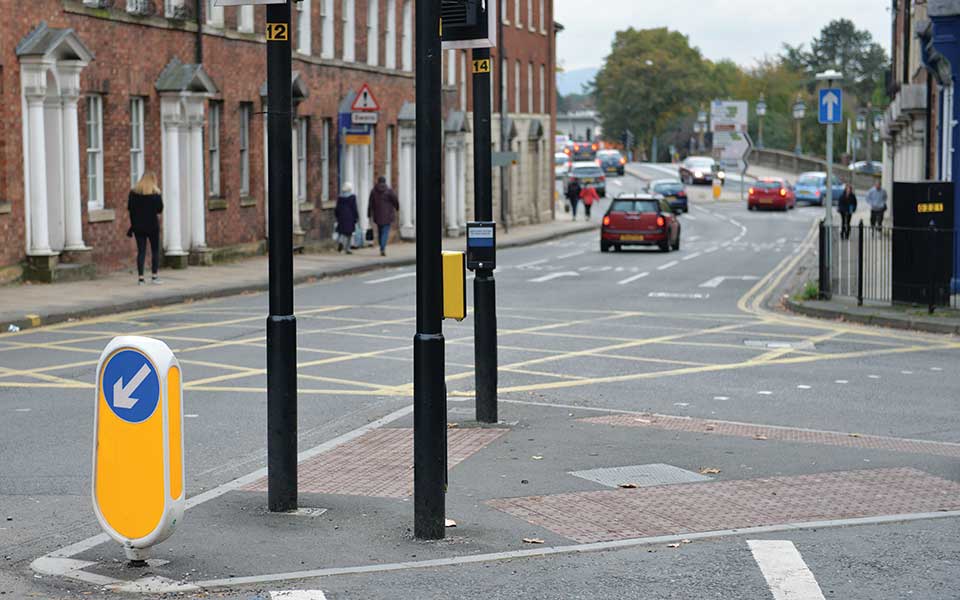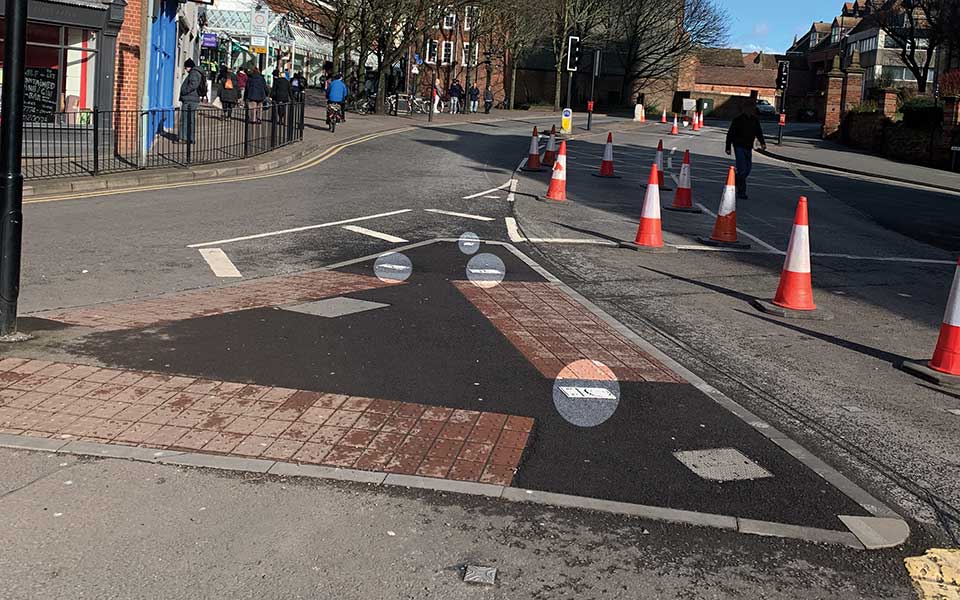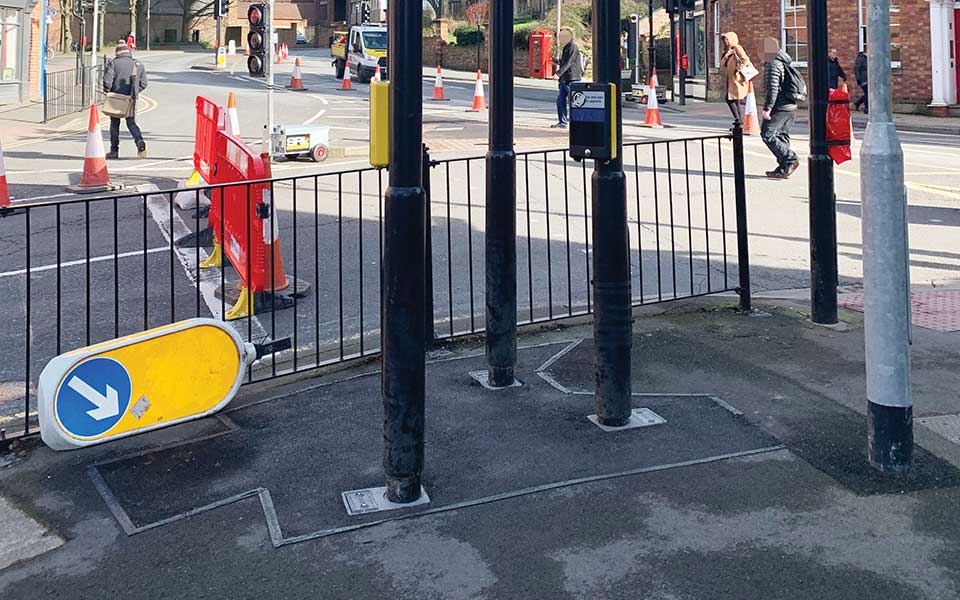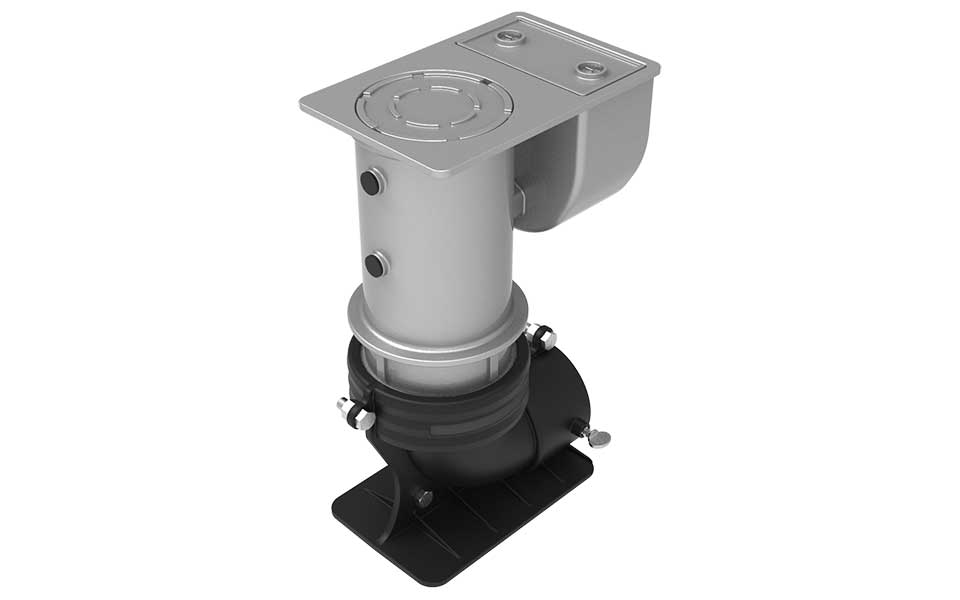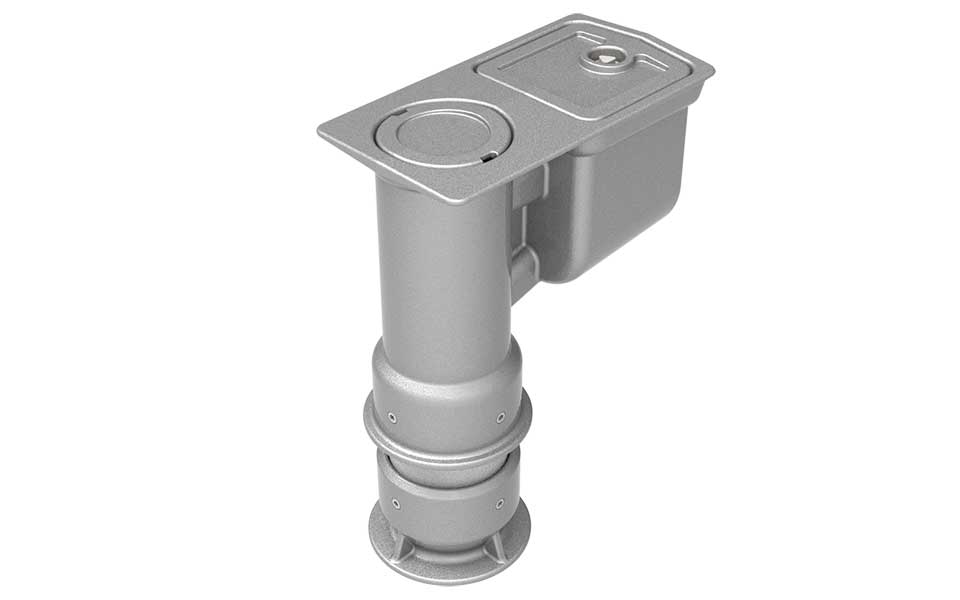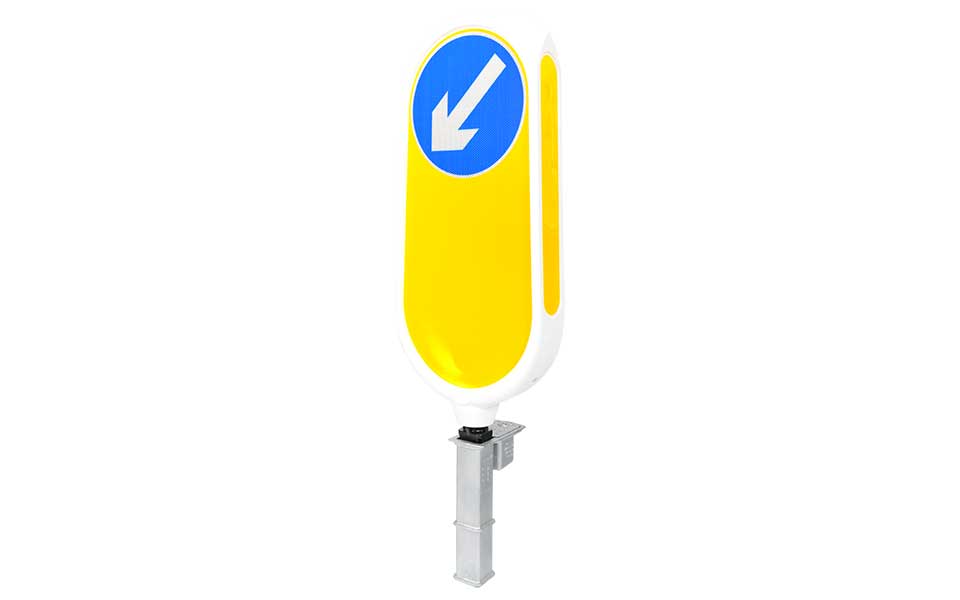Retention Sockets
Demounting Street Furniture | Worcester Floods
The technical team from NAL met with Worcester City Council to discuss the installation of traffic signals and signage on Worcester bridge. As the city is affected by flooding multiple times a year, the highway has been intentionally designed to enable contraflow lanes to run along the central reservation across the bridge. However, in order for the contraflow routes to operate effectively, certain street furniture would need to be removed to enable commuters to travel across.
Worcester City Council opted to install traffic signals within NAL Retention Sockets with Duckfoot Bend, as they allow for a swift and simple removal and easy orientation. At the opposite end of the bridge, highway signage and a Weebol bollard were also housed within Retention Sockets so they too could be removed, enabling contraflow routes to come into effect in the event of flooding.
A second access section was stacked onto the first for further incoming ducts, followed by a riser section for the third layer of the chamber.
The arrival of Storm Dennis and the subsequent storms that followed saw contraflow lanes come into force across Worcester bridge in February 2020. Disruption to commuters was minimal, as traffic signal poles were quickly and simply rotated within their sockets, to orientate signal heads away from the carriageway, allowing for larger vehicles to pass. To enable the contraflow lane to continue across a pedestrian crossing, installation of traffic signals and signage within Retention Sockets, allowed for their complete removal. Three further Retention Sockets were intentionally installed nearby within the footway, to temporarily house the street furniture, whilst the contraflow system was in place.


